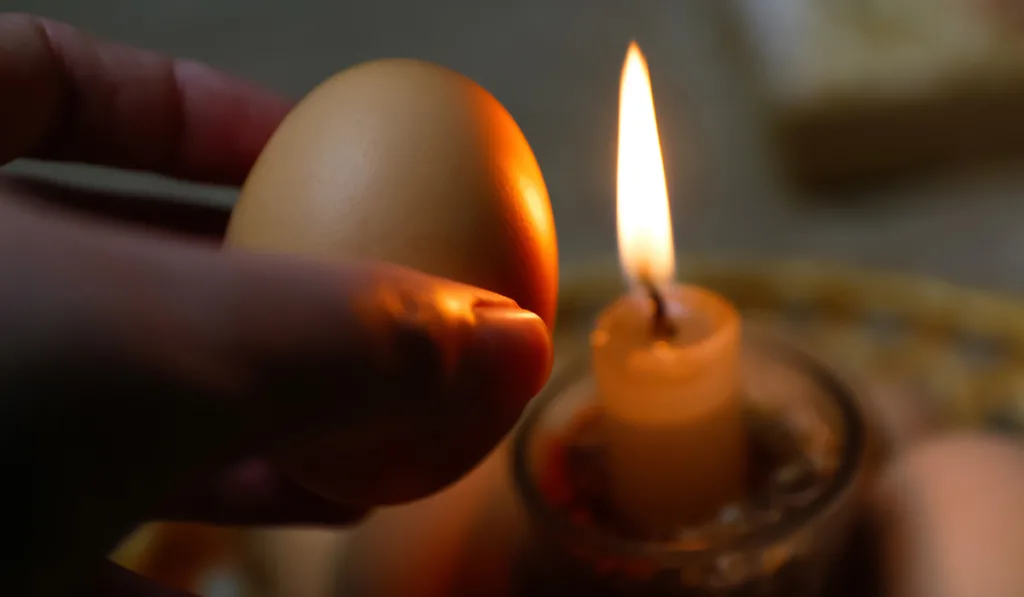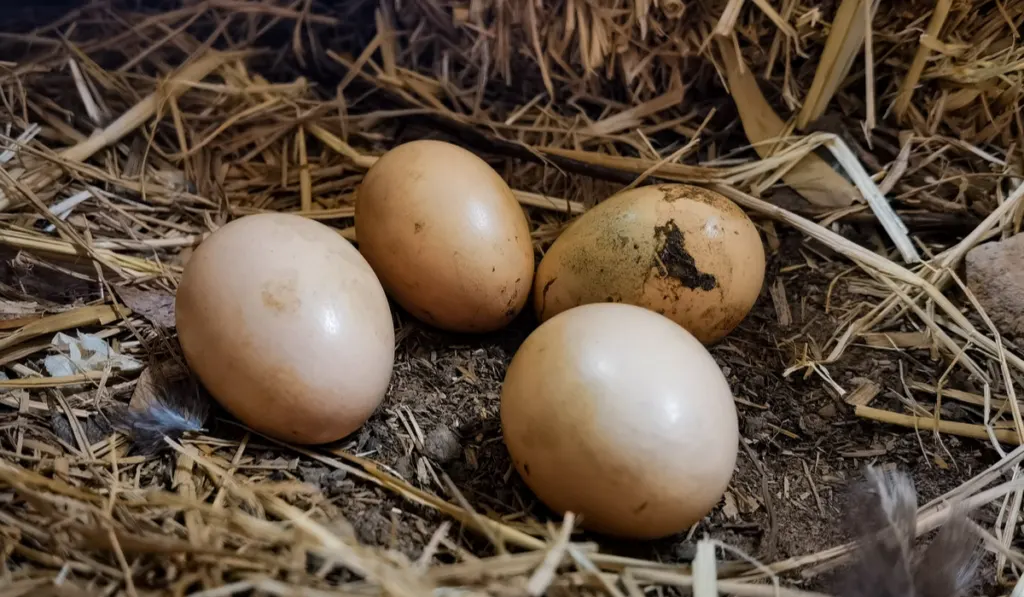Female peacocks or peahens usually lay between 4 and 7 eggs in a single clutch. These eggs usually come in light brown colors with a size that is similar to turkey eggs. They generally measure about 3 inches long and 2 inches wide.
In the wild, peahens will incubate the eggs for 26 to 30 days. Then, the eggs will hatch before the mother starts to look after the chicks.
But if you’re raising peafowl on your farm or backyard, there must be some ways to know if the eggs are fertile and are able to hatch. This is where candling comes in.

Candling is a process to verify whether eggs have been fertilized and are capable of hatching into healthy chicks. Simply put, when you’re candling eggs, you’re putting a source of light near or under the eggs to see the embryo and blood veins of the chicks.
But can you do the same thing to peacock eggs? Can you candle peacock eggs?
You definitely can candle peacock eggs. As long as the process doesn’t harm the eggs, then candling peacock eggs is the best way to gauge the fertility of those eggs. Candling peacock eggs will also tell you whether the eggs have stopped developing later in the cycle.
Table of Contents
Why You Should Candle Peacock Eggs
Candling eggs is very important. This technique shows you if an egg is fertilized and lets you monitor embryo development. Thus, you can remove infertile eggs before they rot and contaminate the others. Rotten eggs can rupture and spread bacteria.
Last but not least, candling won’t put any pressure on the embryo. So, you don’t have to worry about harming the eggs in any way, shape, or form.
You can begin candling eggs five days after you start incubating them. Then candle them every couple of days. However, after 18 days, it might be hard for you to candle the eggs due to the size of the embryo. It has grown larger and takes up a lot of space inside the egg by that point.

How to Candle Peacock Eggs
- To start the candling process, you will need to create your own candler. What you need is a flashlight with a flat end. This will make it easier for you to put the eggs close to the source of light and let the light shine straight into the eggs.
- Get a small piece of card or cardboard. You can also use an old cereal box and cut it into small squares. Technically, the ideal size for this card should be around 6 inches long and 6 inches wide. Then, make a hole at the center of the card, preferably around 1 inch in diameter.
- Move to a dark room or a place that has the least amount of exposure to light. This will make it easier for you to see the condition of the embryos or chicks inside the eggs.
- Put the flashlight vertically on a flat surface and turn the switch on. Make sure that the flashlight doesn’t fall over, or it will break the eggs.
- Put the card on top of the standing flashlight. You will notice that the light comes out through the small hole at the center of the card.
- Take the eggs out of the container of the incubator and slowly place them near the top of the flashlight. Hold the egg close to the card and let the light shine through the egg. Avoid staring into the light source or looking directly from the top of the egg.
- Be sure to keep the eggs warm throughout this whole process. Also, always hold the eggs in the correct position. The wider end should be below and near the source of light.

What to Look For When Candling
Any signs of fertility can be detected when the eggs are ten days old.
Fertile eggs will have darker spots or veins within the eggs. Any eggs that glow translucent are categorized as infertile. If you notice any abnormalities, such as the formation of blood rings (a condition where the blood draws away from the embryo) or streaks on the eggs, then the embryos are dead.
If possible, separate the infertile eggs from the ones that will possibly hatch to avoid contamination during hatching. This will also let you focus on incubating just the fertilized eggs.
Final Thoughts
Today, you can purchase different types of modern candlers ranging from high-intensity LED candlers to rechargeable and wireless candlers. No matter which type you choose, a good candler should be durable and long-lasting.
When purchasing a candler, find one that allows you to customize the intensity of the light and is suited to be used with different sizes of eggs. Lastly, if you haven’t done any candling before, take it easy until you know how to distinguish good eggs from bad ones.
Citations
- https://www.incubators.org/peacock-egg-incubation.html
- https://www.peacocksuk.com/peacock-information/how-to-candle-eggs/
- https://medium.com/@sussannechambers/candling-incubated-peafowl-eggs-3b08c399cee7
- https://www.brinsea.com/brochures/EggCandling.pdf
- https://the-chicken-chick.com/egg-candling-with-an-led-flashlight/
